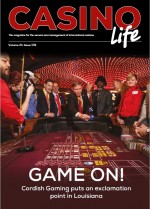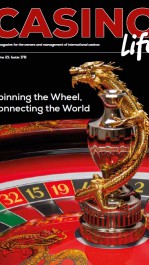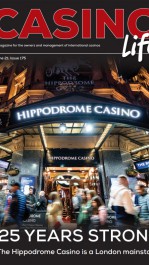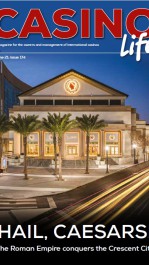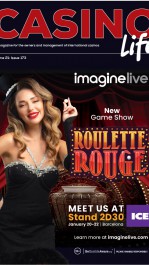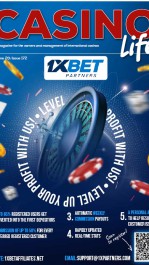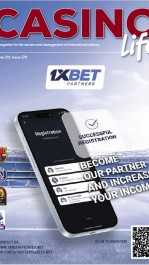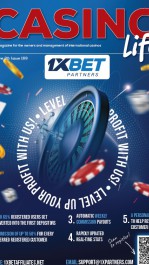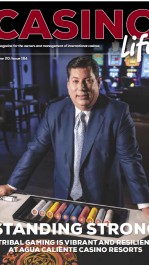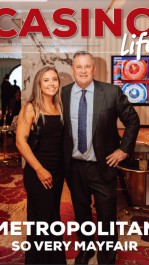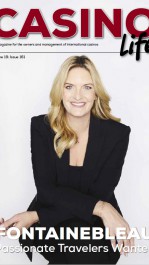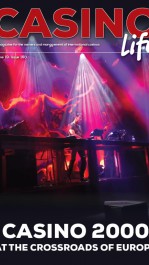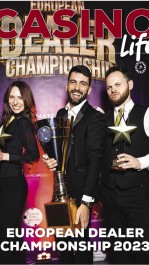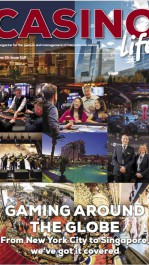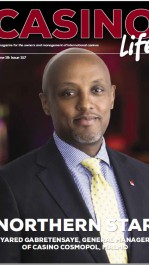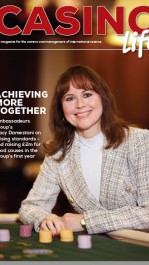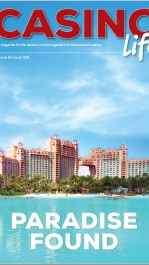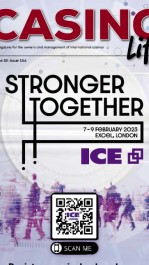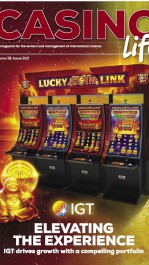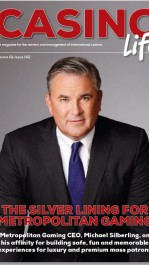'Grandissimo'
David Schwartz Director, Center for Gaming Research University of Nevada, chats with Peter White about his new book 'Grandissimo' a biography of Jay Sarno.
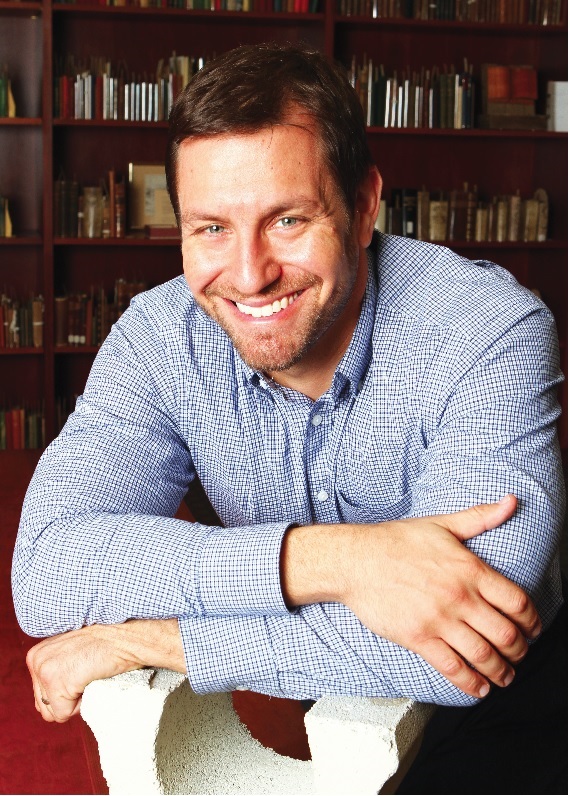
Could we start this interview with a history your from University to present day?
I did my undergraduate work at the University of Pennsylvania and got a master’s in history there as well; I worked in casino security in Atlantic City around this time, too. After that I got a doctorate in United States history from the University of California, Los Angeles. With no academic jobs materializing, I went back to Atlantic City and got a job in casino surveillance. After about a year of that, I found out about an opening at UNLV. I applied for it and, to my surprise, was offered the job. I’ve been there since. I also have done a lot writing about Las Vegas and gambling: I’m currently the gaming and hospitality editor for Vegas Seven magazine, which means I write the biweekly “Green Felt Journal” column as well as bigger feature stories.
‘Grandissimo’ The First Emperor of Las Vegas this is your latest book can you provide an insight into you latest book which is a biography of Jay Sarno? Long answer – and you can add supplementary questions to elaborate further.
After I finished Roll the Bones, which is a comprehensive history of gambling, I wanted to focus on something a little more bounded. Bones was a globe-trotting, millennia-long look at the growth of gambling since the dawn of humankind. It was a difficult book to write because there is so much important material, but you can only include so much. So I wanted to do something different, to tell a story with a beginning, a middle, and an end. The best way to do that, I thought, was to write a biography.
So I started thinking about which figures in gambling history deserved a book but didn’t have one, and Jay Sarno was at the top of the list. Actually, for me he was the only one on the list. It just seemed to make so much sense to write about him.
If you want to know why I thought he was so notable, he built two landmark casinos: Caesars Palace and Circus Circus. Caesars Palace dominate the high end of Las Vegas from its 1966 opening until The Mirage in 1989, and Circus Circus was just as influential at the lower end. Anyone who designs two of the most profitable casinos in the world, I think, deserves a book.
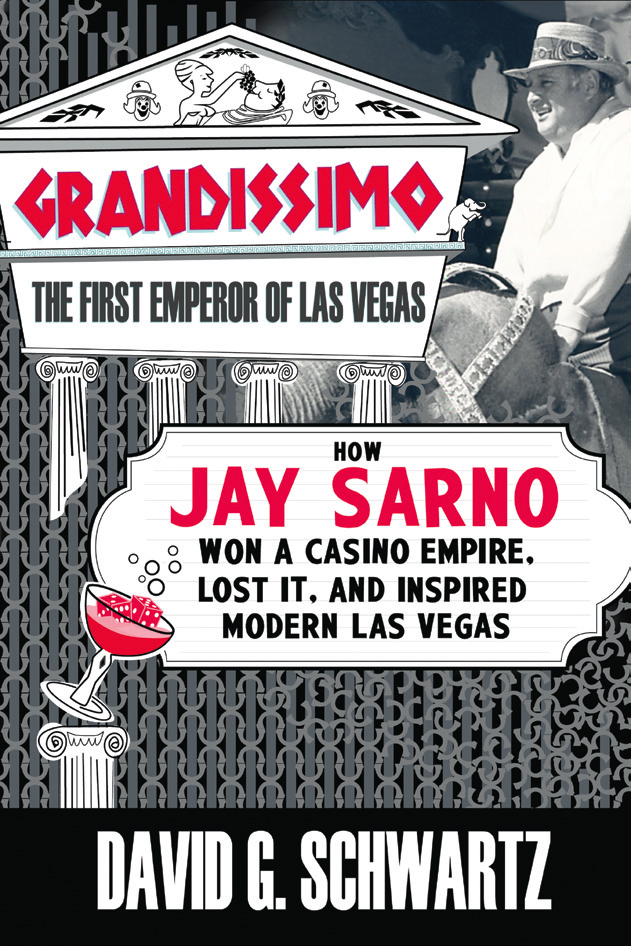
What have been the key standout achievements of Jay Sarno that are the reasons why our readers should add it to their books to read in 2014 lists?
Jay was the guy who changed the whole way Las Vegas operates. I talk about this a great deal in the book. He first comes out to Las Vegas in February 1963. He’s been hearing about how great the city is, and when his plane touches down (he was on a junket to the Flamingo), his jaw drops as they send a station wagon to meet them. Everything was blah, ordinary. He hated it. And this was a guy who described himself as a “degenerate gambler.” He should have been in paradise, but it was just so below his expectations.
Most people just would have gone back home to Atlanta a little disappointed. But Jay thought that he could do better. No, he knew that he could do better. So he decided that he was going to build the world’s greatest casino and hotel.
But how could he do that? Well, he got a start when his friend Jimmy Hoffa made sure that the Teamsters loaned him $10 million. That got him about halfway to his goal. In the book, I talk about a lot of things that haven’t been discussed before, including how Jay met Hoffa, and the compromises that he had to make to get Caesars Palace opened.
So Caesars Palace is one of his standout achievements. The other is Circus Circus, which Jay opened in 1968 because he couldn’t get along with his partners at Caesars. Then he ran into some trouble—he was accused of offering the biggest bribe in IRS history. I tell the whole story of that trial in the book, and it’s interesting not just because it’s an important part of Las Vegas history, but because Jay’s lawyer was a guy named Oscar Goodman, who you may have heard of.
Jay also had the basic idea for the 1990s megaresort about a decade too early. His Grandissimo casino would have had 6,000 rooms, amusement rides, a mall, and other things that in the 1970s seemed crazy but that we accept as a vital part of Las Vegas casinos today.
For those wishing to purchase a hard copy of the book as well as for those whom prefer to read books now on their tablets?
You can buy this book just about anywhere books are sold. The paperback is available at Amazon, bn.com, and the Gamblers Book Club, among other places, online. If you are in Las Vegas, you can pick up copies at the Gamblers Book Club and the Mob Museum. Currently, I have Kindle, Nook, iBook, and Kobo versions for those ereaders, so if you want the book, it should be easy to get it. You can find links to everyplace the book is sold at www.grandissimobook.com.
What other books have you written?
My first book was Suburban Xanadu: The Casino Resort and the Las Vegas Strip and Beyond. It looked at how casinos developed in the postwar era. Then I wrote Cutting the Wire: Gambling Prohibition and the Internet, which looked at how the Wire Act developed and how it was used to prosecute early online gaming sites. After that, I wrote Roll the Bones, the big gambling history. Last year, I revised and updated Roll the Bones in a special Casino Edition that focuses on the development of casinos, with a lot more material on Las Vegas, Atlantic City, Macau, and online gaming than before. I’ve also edited a few academic books that collect essays about gambling.
What aspects of your role as Director of the Centre for Gaming Research do you find most satisfying?
I enjoy helping people learn more about the gaming industry. I try very hard to present the best, most accurate information that I can find. I also like that I get to speak to a broad diversity of people—it could be undergraduates, independent researchers, media, law enforcement, industry executives, it seems like everyone has questions about gambling these days. And it’s never the same day twice—there’s always something new happening.
Have you a favourite quote or phrase?
My First Law of Gambling Convenience is that the easier casinos make it for players to access a game, the worse the odds tend to be. Evidence: keno, which you can play while you’re eating lunch. And the Big 6 wheels are usually on end-caps at high-traffic areas. It’s not exactly Asimov’s three laws of robotics, but it’s what I do.
Finally, when you are not at work – how do you relax?
I spend my non-working time with my family, which is not always relaxing but is always rewarding.



